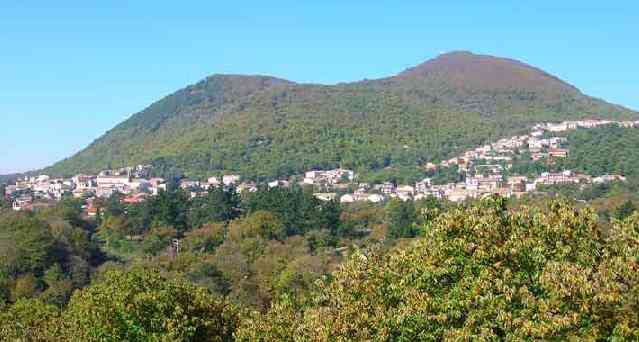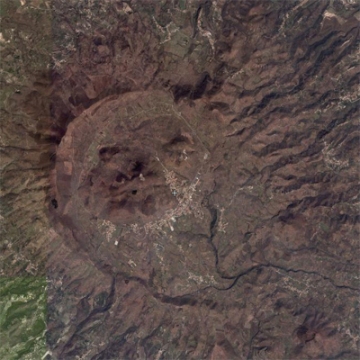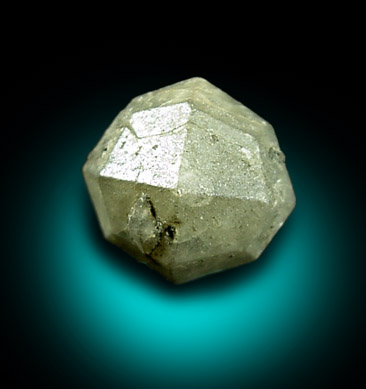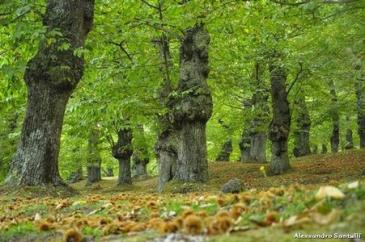Monte Roccamonfina – A relatively unknown Italian volcano with an obscure history
Located some 60 km NNW of Naples in the Campanian province of Caserta lies the medieval town of Roccamonfina, cradling the slopes of an old stratovolcano, considered extinct since its last eruption was at least 50,000 years ago. Roccamonfina is famous for its cuisine based on chestnuts and truffles (funghi porcini).
The volcano itself is massive. With a basal area 17.6 km in diameter, twice the size that of Vesuvius/Monte Somma, the main cone was originally more than 1800 m high before it was destroyed about half a million years ago. Today the mountain is truncated by a caldera measuring some 5 by 6 km in which the current summit cones has grown to an altitude of 1005 m. The last eruptive period is thought to have ended 50,000 years ago, and the volcano is thought to be extinct, a view that may be supported by exploration of its geothermal potential which found a very low temperature of 35°C at 886 m. Apart from this, it would seem that everything else is highly disputed and not very much known except that it is considered to be "a typical alkali-potassic volcano" (Capuano, Continisio & Gasparini; 1992)

Fig 2. The twin thrachyandesitic domes that form the current peak of the Roccamonfino Volcano with the town of Roccamonfina at their base. (itineraiparlli.org)
To give a brief summary, the age of the Roccamonfina volcano is variously given as between 1.5 million years (Watts, 1987) and 590 thousand years (Gianetti, 2001). The causes of the caldera collapse given by Watts is that there was a series of St Helens-type eruptions and flank collapses that led to its formation. Gianetti directly disputes this as caldera collapses due to sector sliding "are improbable as tested by the absence of rock-slide avalanche deposits" and considers the most likely cause to be incremental collapses "through repetitive draining of the magma chamber(s) resulting from a succession of moderate-sized volcanic events". De Rita and Giordano (1996) puts the volcano's age as 630 – 50 kA and dismiss both the above theories on stratigraphical evidence. Instead they propose that "Geomorphological and structural observations, together with geophysical evidence, suggest that collapse of the volcano summit occurred as a mechanical re-adjustment to the high rate of the Garigliano graben extension during a climax of the regional tectonism at around 400 ka bp". Going back to Tedesco ("Main Lines of the History of the Roccamonfina Volcano", 1965) attributes the caldera collapse to "eruptions of a vast magmatic portion of dubitative thrachyte composition produce a thick sequence of mudflows and <<pyroclastic flows>>".

Fig 3. Aerial photograph of Roccamonfina caldera. (campaniatour.it)
Great! We have a volcano at least four times the size of Vesuvius with a 5 x 6 km caldera (Tedesco gives 5 x 7 km) and four different scientific papers proposing four different causes for its formation of which two are irreconcilable with each other and the other two. At least Gianetti and Tedesco agree that the caldera collapse could be due to a large eruption or a series of large eruptions.
So what do we know about the Roccamonfina volcano? Here I am trying to reconcile all these various and conflicting statements to piece together a credible, but by no means definitive or accurate account:
Some 1.5 million years ago, volcanic activity began in the Roccamonfina area. 600,000 years ago, this activity had built a 1800 m high stratovolcano composed mainly of leucitic lavas and tuffs with several monogenetic cones on its flanks, some of which were composed of thrachytic lavas.

Leucite from Roccamonfina. Image copyright by John Betts (http://webmineral.com/)
Then followed two main periods of large eruptions that formed four nested calderas; the first between 546 and 474 kA and the second between 403 and 374 kA. The main cone collapsed to form the central caldera around 496 +/- 50 kA. The collapse of the main cone was accompanied by a ring fracture concentric with and outside the main caldera. This would, to my mind at least, indicate that the main caldera was formed by a large eruption, at least VEI 6+, that was not accompanied by the emission of ignimbrites and that, for reasons at present unknown, the evidence for this has not been found and could be "lost".

Fig 5. Roccamonfina chestnut forest, a most relaxing environment for someone writing their doctoral thesis on the Roccamonfina Volcano. (Alessandro Santulli)
After the collapse of the main caldera, a lake formed in the NW part which has left lacustine deposits inside the caldera. Following this, two large thrachyandesitic domes were extruded around, probably during a second period of activity 385 – 285 kA. This was accompanied by a trachytic ashflow that filled the caldera, the radial valleys and spread out into the surrounding plains. Again, evidence of a very large eruption that seems to have gone missing from the records.
As to the final period of activity that ended about 50,000 years ago, I have been unable to trace any evidence for it except the statement. It would seem that the Roccamonfina Volcano is understudied which perhaps is not surprising considering its extinct status. That said, is there a young geology student out there looking for a study object for her or his doctoral thesis? The setting of Roccamonfina and its cuisine would make this task a most agreeable one!
One last tidbit. In a study published in 2004 of the underlying crust using shear wave velocities obtained from seismic events recorded in 1988–2004 at Roccamonfina station of the INGV-RSNC network, Nunziata & Gerecitano have built the following model: The Roccamonfina edifice stands upon a 5 km thick sedimentary zone (i.e. one rich in silicic rocks, minerals and water). Below this they have found a high velocity zone that corresponds to a body of solidified magma. The corresponding layer of sedimentary rock underlying the surrounding Appenines is 10 km thick. Below the layer of solidified magma, Nunziata & Gerecitano found evidence for a low velocity layer with an average thickness of 10 km which can be associated with the presence of partial melting and they interpret as magmatic reservoir. Such low velocity layer was also found below the surrounding Apennines but with a reduced thickness of 2–3 km. This layer extends to the Campanian Plain and to the Neapolitan volcanic area, from Campi Flegrei to Somma-Vesuvius.
It would thus seem that the Roccamonfina volcano has depleted some 5 km of the sedimentary layer during its lifetime and the only logical conclusion would seem to be that the process responsible is absorption and remobilisation as magma which then has erupted. If you want to, you could imagine it as some kind of a magmatic blowtorch burning its way through the sedimentary layer. Furthermore, it would seem that the zone of partial melting is also much thicker than elsewhere but that no new energy has been added to this for a very long time. In a private conversation with Carl, he speculated that it could have something to do with isostatic rebound after the glaciation of the Alps and Appenines and that as long as they were glaciated and thus depressed, there existed a fold that allowed magma access to the Roccamonfina area. As there is evidence of a physical link between them, the zone of partial melting, and that the first eruptions of Campi Flegrei are thought to have occurred some 40 kA before present but after the last eruptions at Roccamonfina, it is entirely possible that isostatic rebound has shifted the volcanism from Roccamonfina to the Naples area.
HENRIK
UPDATE: Large 7.7M Earthquake in Pakistan
A large earthquake has happened in the Haji Haram Khan mountains. Due to the lack of local building codes a large number of casualties is expected to have occured. Discussions about this is welcome in the comment thread below.
http://www.emsc-csem.org/Earthquake/earthquake.php?id=335667
CARL
Update: Image of the crater of Vesuvius from http://www.mondodelgusto.it/2009/03/05/arte-natura-nel-parco-regionale-roccamonfina/ replaced with image of Leucite on Henrik´s request. chryphia
--
__._,_.___
No comments:
Post a Comment